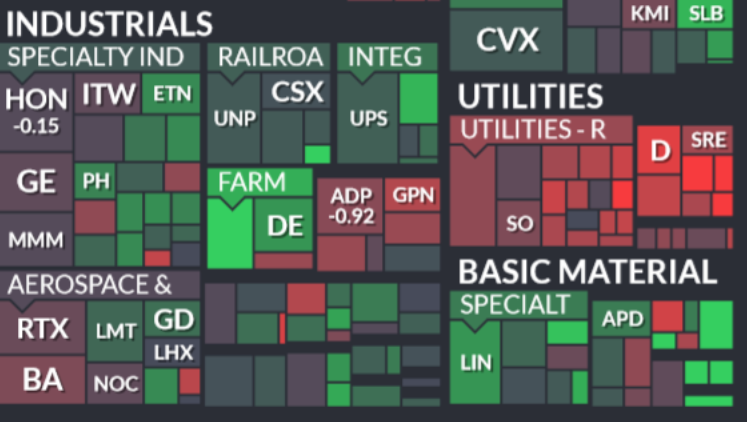Yesterday’s trade saw USD/ZAR within the range of 10.9234-11.0510. The pair closed at 11.0132, gaining 0.62% on a daily basis.
At 7:52 GMT today USD/ZAR was up 0.44% for the day to trade at 11.0556. The pair touched a daily high at 11.0657 at 8:00 GMT.
Fundamentals
United States
Gross Domestic Product – second estimate
The second estimate of the US Gross Domestic Product probably pointed to an annualized rate of growth of 3.3% in the third quarter of the year, according to the median forecast by analysts. The preliminary GDP estimate for Q3, reported on October 30th, pointed to an annual growth of 3.5%. In Q2 economy expanded at an annualized rate of 4.6%, according to final data, or the most since Q4 2010, when the GDP grew 5.6%. The preliminary estimate showed a downturn in inventory, residential and nonresidential investment and deceleration in personal consumption, exports and state and local public spending. Real personal consumption expenditures rose 1.8% during the third quarter, compared with a 2.5% growth in Q2. Real nonresidential fixed investment expanded 5.5% in Q3, compared with an increase of 9.7% in the second quarter. Real exports of goods and services were up 7.8% in the third quarter, after they rose 11.1% in Q2. Real federal government consumption expenditures and gross investment expanded 10.0% during the quarter, following a decrease of 0.9% in Q2, according to data by the US Department of Commerce.
Currency traders will usually look for higher rates of growth as a sign that interest rates will follow the same direction. Higher interest rates will attract more investors, which will increase demand for the US dollar. If an economy is experiencing a robust rate of growth, the benefits will eventually affect the end consumer, because of the increased likelihood of spending. Furthermore, through increased consumer expenditures the economy has the potential to expand even more. In case the second GDP estimate outpaced expectations, this would certainly heighten the appeal of the greenback. The official data is due out at 13:30 GMT.
Consumer confidence
Confidence among consumers in the United States probably continued to improve in November, with the corresponding index coming in at a reading of 96.0 from 94.5 in October. If so, this would be the highest index value since September 2007, when the gauge was reported at 99.5.
This indicator measures the level of individuals confidence in the US economic activity. It is considered as a leading indicator, as it gives an early insight into consumer spending, which accounts for most of the nations GDP. Confidence is measured on a scale of -100 to +100. A reading of -100 implies a lack of confidence, while a reading of 100 is indicative of extremely high confidence. Zero values imply neutrality. In case the index improved more than anticipated, this might provide support to the US dollar, as higher confidence suggests greater willingness to spend and, respectively, accelerated economic growth. The Conference Board research group is to publish the official index reading at 15:00 GMT.
South Africa
South African economy probably expanded at an annualized rate of 1.4% during the third quarter of the year, following a 1.0% growth in Q2. The latter has been the lowest growth rate since the recession in 2009, as a five-month strike in the platinum sector had an adverse effect on mining for the second consecutive period. The agriculture, forestry and fishing industry marked the highest annual growth rate, 5.8% in Q2, after it contracted during the preceding three quarters. The sector of construction expanded 3%, while transport and communication activities grew 2.5%, according to the report by the Statistics South Africa. At the same time, mining sector in the country shrank 2.7% in the second quarter, while manufacturing – 0.6%.
In quarterly terms, nations Gross Domestic Product probably expanded 1.4% in Q3, following a 0.6% growth in Q2. If so, this would be the largest quarterly increase since the fourth quarter of 2013.
In case economy grew at a faster-than-expected pace in Q3, this would provide support to the rand. The official GDP report is to be released at 9:30 GMT.
Pivot Points
According to Binary Tribune’s daily analysis, the central pivot point for the pair is at 10.9959. In case USD/ZAR manages to breach the first resistance level at 11.0683, it will probably continue up to test 11.1235. In case the second key resistance is broken, the pair will probably attempt to advance to 11.1959.
If USD/ZAR manages to breach the first key support at 10.9407, it will probably continue to slide and test 10.8683. With this second key support broken, the movement to the downside will probably continue to 10.8131.
The mid-Pivot levels for today are as follows: M1 – 10.8407, M2 – 10.9045, M3 – 10.9683, M4 – 11.0321, M5 – 11.0959, M6 – 11.1597.
In weekly terms, the central pivot point is at 11.0392. The three key resistance levels are as follows: R1 – 11.1734, R2 – 11.2764, R3 – 11.4106. The three key support levels are: S1 – 10.9362, S2 – 10.8020, S3 – 10.6990.





